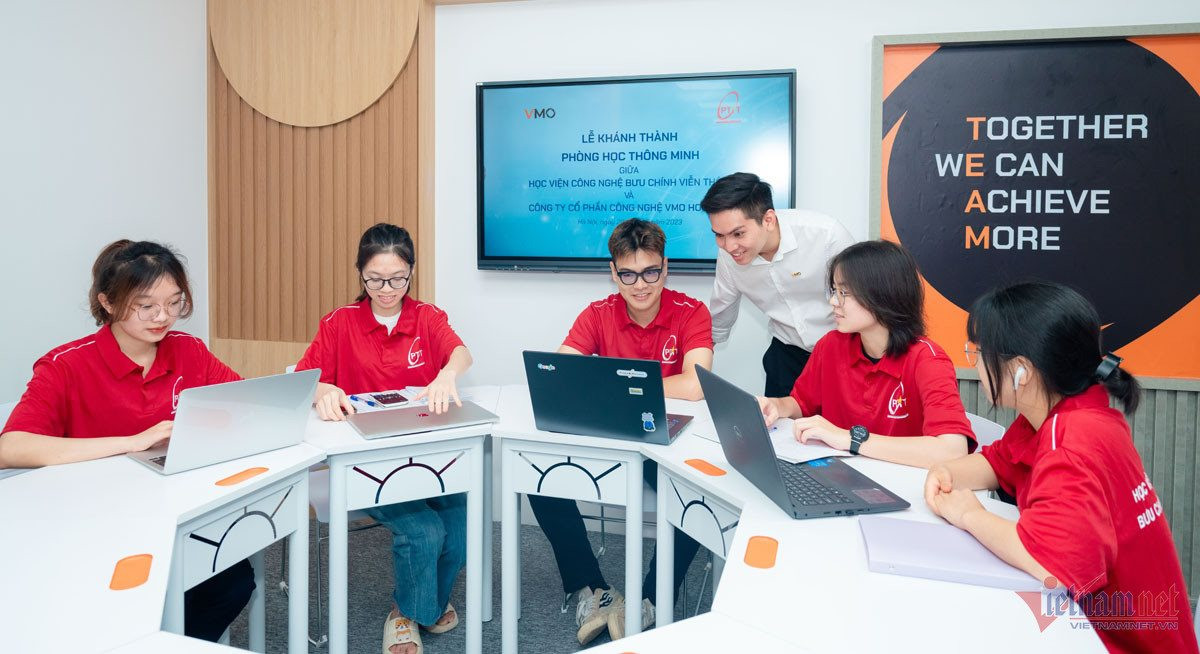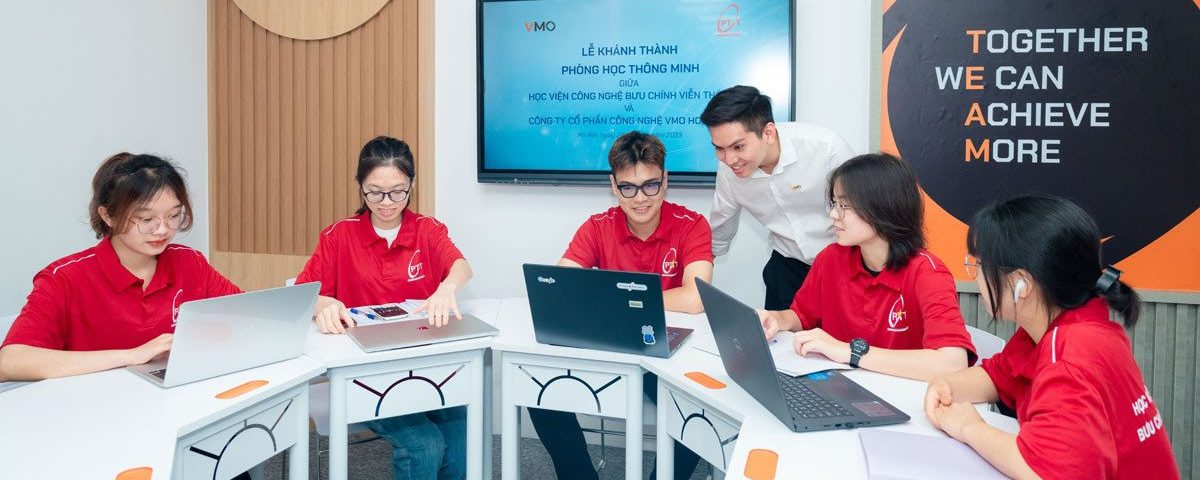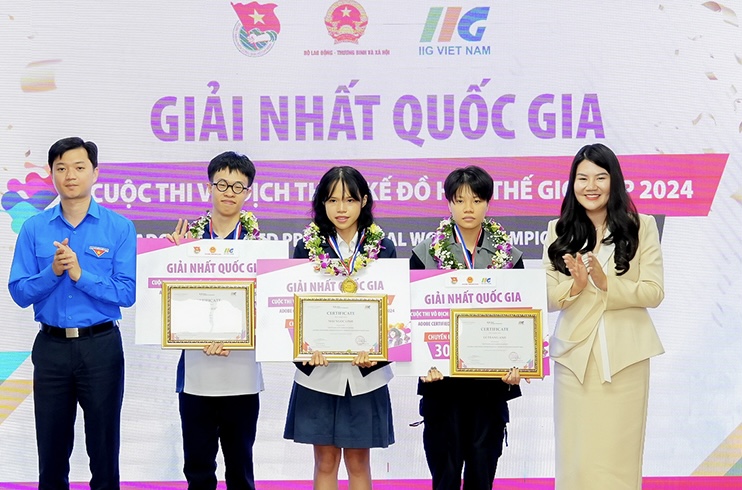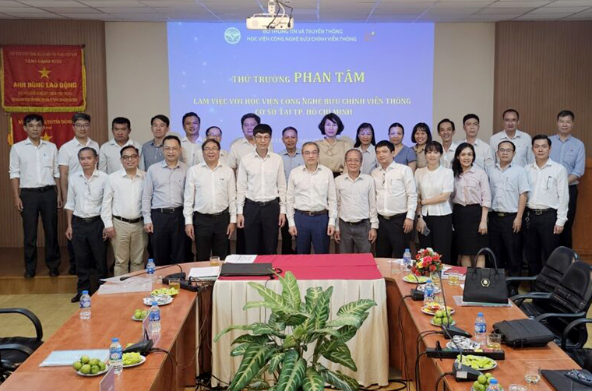Posts and Telecommunicatons Institute of Technology
PTIT continues to meet the high-quality human resources needs by opening the Vietnamese – Japanese Information Technology Engineer program.

The Deputy Minister of Information and Communications, Phan Tam, visited and worked at the Ho Chi Minh City campus of the Posts and Telecommunications Institute of Technology.
06/03/2024
Representative from PTIT won The 1st Prize in The National World Graphic design Championship ACP 2024
06/03/2024For the first course of the Vietnamese-Japanese IT engineer program, Posts and Telecommunications Institute of Technology (PTIT) will enroll 100 students this year.

Supplying high-quality human resources for the Japanese market
In recent years, the labor market has become increasingly competitive. Although the workforce in the IT field is increasing, the supply of high-quality human resources is still scarce.
Japan is a developed country with advanced technical expertise. However, according to statistics from the Ministry of Economy, Trade and Industry of Japan, by 2030, the country will face a shortage of up to 789,000 IT engineers. Therefore, the Japanese labor market is becoming open to developing countries.
As a top university in Vietnam for ICT training, PTIT is also a partner of many Japanese universities and businesses. Therefore, opening the Vietnamese-Japanese IT engineer training program is a suitable direction in the current situation.
Students in the program will be equipped with knowledge and skills according to the regulations and standards of the Japanese ITSS IT engineer. After graduation, in addition to the IT engineer degree awarded by the Institute, students will have a Japanese language proficiency equivalent to N3, and PTIT will support them in job placement at Japanese companies in Vietnam and Japan.
One of the differences in the PTIT program is the high proportion of Japanese language courses, with 24 credits taught by highly qualified instructors from MEROS Language Institute and other partners. Students will be trained in both English and Japanese languages.
During their studies, students can transfer to partner universities if they meet the requirements. Currently, some partner universities are ready to accept students from the program to study in Japan, such as Hosei University, Hokkaido University, and Tsukuba University.
PTIT also provides information on post-graduation salaries of up to over 500 million VND per year for the program. Furthermore, students are almost guaranteed employment after completing the Vietnamese-Japanese IT engineer program.
Graduates who meet the equivalent standard of the Japanese ITSS IT engineer after graduation; Have the ability to pass the IT Passport and IT FE certification exams. These are two basic certifications for IT engineers in Japan. Possessing these certifications will provide many advantages for students when applying to IT companies, especially those in Japan, or when applying for Kodo visa/permanent residency in Japan.
The program includes practical training with Japanese companies in Vietnam and Japan. Companies will work with students on projects and real products, helping them become familiar with the business environment and develop unique products for their future resumes.
Students will also participate in workshops with leading technology experts at Japanese companies to gain specialized knowledge and insights into the IT market in Japan. They will also take part in annual extracurricular activities, especially cultural exchange activities in Japan.
Training a generation of global IT engineers
In the era of globalization, internationalization is spreading rapidly across all sectors of society. Training students in the Vietnamese-Japanese IT engineer program is one of PTIT’s strategies to develop a global workforce of IT engineers.
The faculty members participating in the Vietnamese-Japanese IT engineer program all have a master’s degree or higher from universities in developed countries and relevant fields. Particularly, lecturers teaching theoretical subjects have a Ph.D. degree, as well as the titles of Professor or Associate Professor. These lecturers have professional competence, scientific research experience, teaching experience of at least 5 years, effective teaching methods, and practical application of IT in teaching and research.
Through the Vietnamese-Japanese IT engineer training program, students will be equipped with knowledge in IT, especially in software development, creating a generation of IT engineers capable of effectively addressing challenges and opportunities in the modern IT industry, particularly for the Japanese labor market.
Several universities in Vietnam have been offering Vietnamese-Japanese IT engineer programs, such as Hanoi University of Science and Technology with the HEDSPI Vietnamese-Japanese Bachelor of Engineering in Information Technology program; University of Science and Technology of Hanoi with Bachelor of Computer Science and Engineering. These programs offer bachelor’s degrees.
PTIT’s opening of the Vietnamese-Japanese IT engineer training program, with a commitment to providing high-quality IT engineers, is a new development that aligns with its strategic development plan for 2020-2025 and vision for 2030, as well as the training system of universities in Vietnam in general. This is both a challenge and an opportunity for PTIT to diversify its training methods and expand cooperation with leading universities in Japan and international universities in general.
The program’s admission targets high school graduates or equivalent; participation and passing of the regular university entrance exam – Exam subjects: Mathematics, Physics, Chemistry (cluster A00) or Mathematics, Physics, English (cluster A01); or other admission options as stipulated by PTIT.
The training program lasts for 4.5 years, including 8 semesters, with 7 semesters accumulating knowledge at the Institute and 1 internship semester at a practical base to complete the graduation project. Students are encouraged to complete their graduation projects in English and Japanese.
After graduation, students can take on various positions such as: programming (web applications, mobile applications, front-end, back-end, embedded software…); software testing, business analysis, system analysis, system design, software project management; database design and administration, computer network management; management and operation in the IT field; network security; data analysis; sales consulting, technical consulting specialist, and Vietnamese-Japanese IT engineer./.






